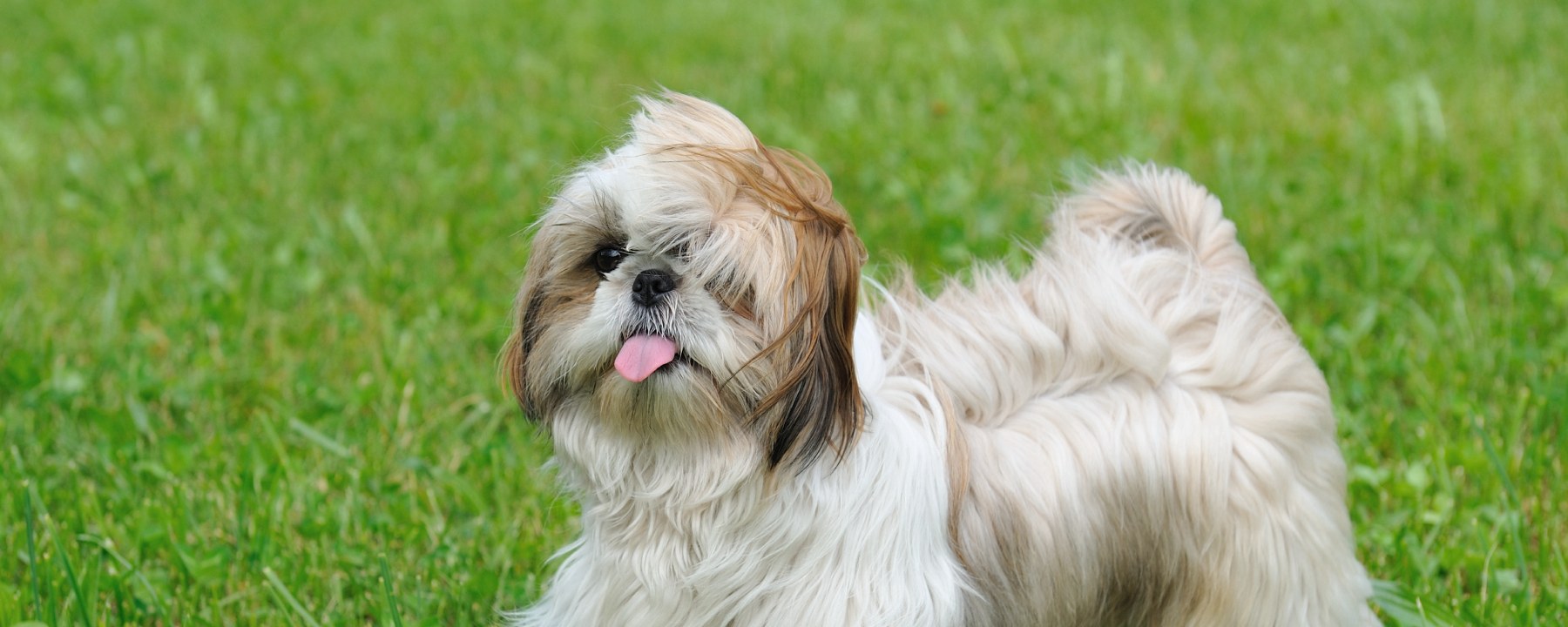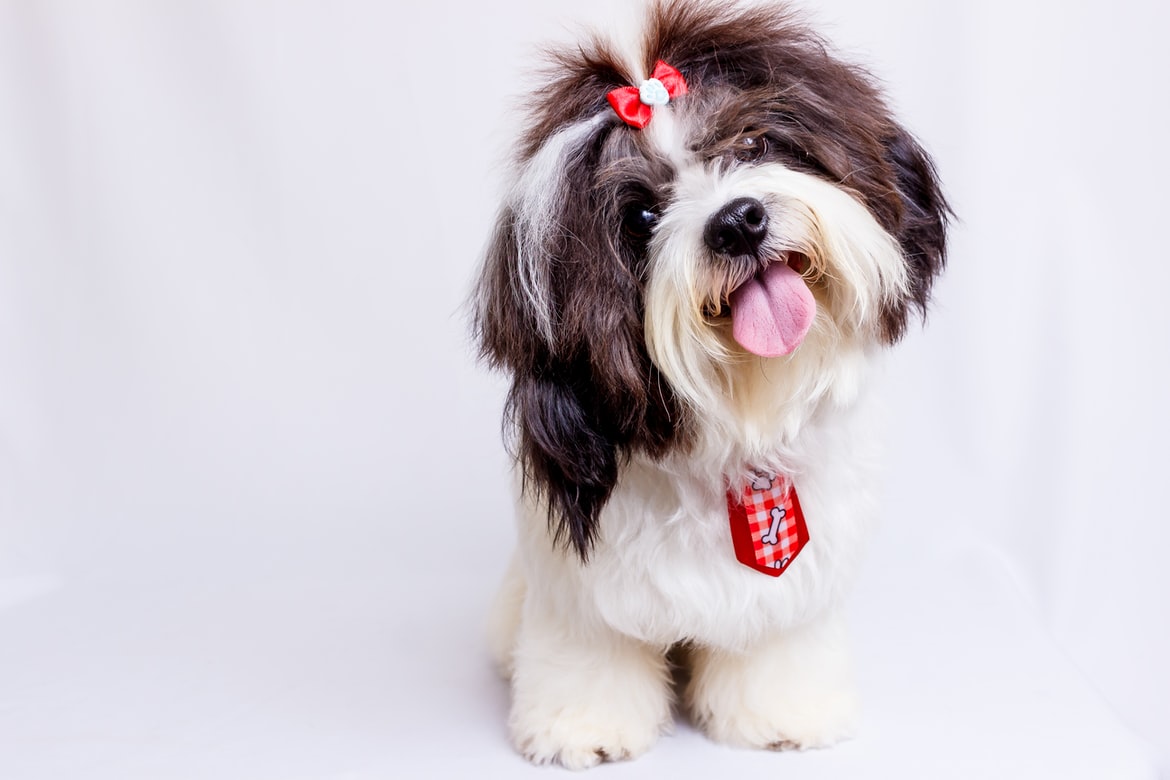
Shih Tzu
Posted: 02/14/2023 | BY: Content Writer
Shih Tzu Breed Profile
Pet profile
Great for smaller households who can devote time to training and grooming.
- Small (22cm to 25cm)
- Typically weighing between 4.5kg and 8kg
- 10 to 16 years life expectancy
Shih Tzus make great companions in any sized home. They are friendly and bubbly dogs, making them a joy to be around.
This dog is the perfect house pet and man’s best friend as they love to be around their owners. A Shih Tzu’s idea of fun is sitting with its owner as a lap dog rather than digging holes outside.
This friendly dog is one of the most popular ancient breeds still to this day. The modern Shih Tzu are great companion dogs.
The Shih Tzu is what is known as a chrysanthemum-faced dog. They have an adorable teddy bear flat face and often misaligned teeth.
Shih Tzu owners must be aware they do require a lot of grooming care. They have a long and luxurious coat that will require daily brushing to avoid knotting and keep your pooch looking their best.
A Shih Tzu’s coat is what they are most recognized for, and pet owners can choose between various adorable hairstyles, and many decorate with bows or ribbon.
Their temperament is very friendly and affectionate, which is why this ancient breed is still one of the most popular toy breeds today.

History of Shih Tzu Dogs
The Shih Tzu dog breed comes of Tibetan and Chinese origin. They are a beloved breed kept by Chinese royalty known as the “lion dog.” This ancient breed has been long praised by Chinese emperors and the Ming dynasty as royal lap warmers.
The Shih Tzu was most likely developed from Tibetan breeds called the Lhaso Apso and the Pekingese. They were given by Chinese emperors as gifts and were known to be very affectionate dogs.
In the 1930s, breed clubs began recognizing the Shih Tzu dog breed in England and Peking. In 1969, the American Kennel Club recognized the breed, and since then it has been one of the most popular toy breeds in the US and the UK still to this day.
Characteristics of Shih Tzus
Shih Tzus are small dogs weighing between 9 to 16 pounds and standing between 8 and 11 inches tall. Despite being a little dog, they are still sturdy dog, whereas some toy breeds can feel very frail.
Shih Tzus are known for their gorgeous coats, which can come in a variety of breed standard colors, including black, white, blue, silver, gold, liver, brindle, and red.
Shih Tzu’s fur can grow very long and requires routine grooming. Their long hair requires daily brushing so their hair doesn’t mat, or can be cut shorter by a professional groomer.
Often people tie back their hair on their head with a bow or tied into a topknot. It can also be trimmed short, but maintenance is required so that they can see.
Shih Tzu’s face is flat, and they often have an undershot bite. They are considered a chrysanthemum dog breed, which means their facial hair grows in every direction.
The Shih Tzu is genuinely an indoor dog. They were initially bred to live inside palaces and need minimal exercise compared to large working breeds. Shih Tzus make great family dogs and are affectionate with children.
They are a small dog breed that is eager to please, making them relatively easy to train, although many Shih Tzus are known for being stubborn. The initial training period with this breed can sometimes be longer.
Shih Tzus tend to be more vocal than other breeds and will bark. Older Shih Tzus are couch potatoes content with being a lap dog.
Adopting A Shih Tzu From A Breeder Or Rescue
When you adopt a Shih Tzu puppy, it is recommended to find a reputable breeder recognized by the American Kennel Club or the Shih Tzu Club. Responsible breeders must avoid inherited diseases such as hip dysplasia or progressive retinal atrophy.
You can also adopt from Shih Tzu rescues or sometimes even a shelter.
Exercise And Nutrition of Shih Tzu Dogs
Even though these dogs are small, they still require a significant amount of exercise. Taking your Shih Tzu out for two or three shorter walks a day should be enough to keep them happy and healthy.
A Shih Tzu will also benefit significantly from treats and toys to keep their mind active. They are known to be very playful, interactive, and they often do well with children.
How much you feed your Shih Tzu will depend on its weight, size, and age; however, most require two high-quality meals per day. Consult your veterinarian for further advice around nutrition and the best type of food for your dog.
Common Health Problems And Illnesses Of Shih Tzus
Shih Tzus are a generally healthy breed, but they do have their share of health issues. It is a good idea to take out pet insurance for your Shih Tzu while they’re still a puppy.
Portosystemic shunt, or liver shunt, is a condition that commonly affects Shih Tzus. Waste that the liver would normally expel from the body is still present, and the condition can develop into a serious health problem.
Usually, surgery is necessary to treat a liver shunt; however, surgery is not always appropriate, and sometimes the condition will need to be managed with medication.
Shih Tzus can also suffer from thyroid issues, which can cause weight loss, tiredness, and in severe cases, even heart problems. Drugs are needed to treat thyroid disorders, which often hits Shih Tzu when they reach middle age.
Shih Tzus have a flat face, making their eyes more vulnerable to injuries or health problems. Corneal ulcers are a common issue that can affect this breed. These ulcers can create scratches in a dog’s eye, which can impair their vision.
Signs that your pet may have a corneal ulcer are red and watery eyes, frequent blinking or rubbing, and sensitivity. If your dog is experiencing any of these issues, then consult your veterinarian for advice around the best treatment for your dog’s condition.
Cushing’s disease is a common health problem in Shih Tzus. The condition affects how the body regulates itself and causes an overproduction of cortisol. The common signs of this condition include patchy hair loss, excessive thirst, and a change in toilet habits.
Consult your veterinarian if you notice any of these symptoms and they will be able to advise you on the best course of treatment.
Brachycephalic airway syndrome can also affect Shih Tzus due to their broad head shape. This condition can make breathing more difficult.
If you notice that your dog is having difficulty breathing, consult your veterinarian for advice straight away.
Intervertebral disc disease, also known as a slipped disc, is also common in Shih Tzus. Treatment is dependent on the location and cause of the injured area. Medication, rest, and sometimes surgery are needed to help return your dog to full health.
If you think your dog is suffering from a slipped disc, then consult your veterinarian as soon as possible for advice on treatment.
Bladder stones commonly occur in Shih Tzus. Curing this disease involves changing your dog’s diet or, if severe, the stones may need to be removed surgically.
Progressive retinal atrophy (PRA) is a degenerative disease that can eventually lead to blindness in your dog. The first sign is usually night blindness and then it develops over time.
PRA is an inherited disease so if a dog is known to develop this, it should not be continued to be bred.
Fun Facts About Shih Tzus
- The Shih Tzu breed is over 1,000 years old.
- Their name translates into “Little Lion” because of their relation to the Tibetan Buddhist God of Learning, who legend says traveled with a small lion dog that could transform into a fully-grown lion.
- Celebrities love a Shih Tzu! Nichole Richie, Mariah Carey, Beyoncé, Colin Farrell, Bill Gates, and Queen Elizabeth II have all owned a Shih Tzu.
- Shih Tzus are a double-coated breed. A second coat develops when your dog reaches around seven months old.
- They are a hypoallergenic breed, making them ideal for those who suffer from allergies as their fur does not shed.
